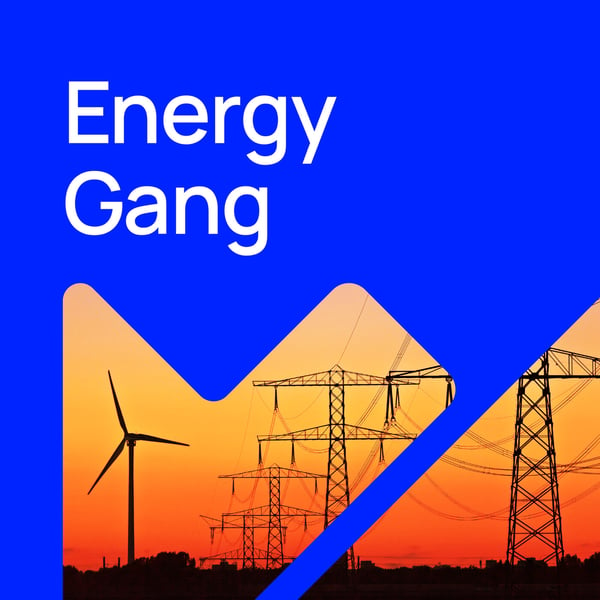Can we add dozens of giant new data centers to the electricity grid? New research says yes – if we embrace load flexibility.
The Energy Gang
Wood Mackenzie
4.6 • 1.3K Ratings
🗓️ 13 May 2025
⏱️ 63 minutes
🧾️ Download transcript
Summary
It’s the most talked-about academic paper this year in the world of energy. Rethinking Load Growth, co-authored by Tyler Norris of Duke University has caused a stir in energy circles because it offers a new perspective on the hottest issue of the moment: how to provide power for new data centers and other large consumers. With new sources of electricity demand growing rapidly – from data centers for AI to battery factories to EV charging networks – grid planners are scrambling to understand how to integrate large new loads without breaking the system or budgets.
That is the question for Rethinking Load Growth, and it delivers a startling insight: The US grid could absorb 98 gigawatts of new load, IF those loads can be sufficiently flexible. They would need to be curtailed for just 0.5% of the year, which is about 42 hours in total – not all in one go, but in blocks averaging a couple of hours at a time.
That kind of load flexibility could unlock faster, cheaper grid expansion, with big implications for investors, policymakers, and companies racing to develop new data centers and other facilities.
Tyler joins the show with host Ed Crooks and regular guest Amy Myers-Jaffe to discuss his research. They debate the questions:
- Why is his paper is causing so much interest in energy circles, and beyond
- What real-world adoption of flexible load looks like for data centers
- Whether virtual power plants (VPPs) are the missing piece
- And how governments and regulators could make or break this opportunity
See Privacy Policy at https://art19.com/privacy and California Privacy Notice at https://art19.com/privacy#do-not-sell-my-info.
Transcript
Click on a timestamp to play from that location
| 0:00.0 | If we end up with rolling blackouts because we've added too many data centers too quickly for existing residential customers, I think there are going to be a lot of pitchforks in the air. |
| 0:10.1 | Hello and welcome to The Energy Gang, a discussion show from Wood McKenzie about the fast changing world of energy. |
| 0:15.8 | I'm Ed Crooks, and I'm joined today by Amy Myers-Jaffy. |
| 0:19.1 | Amy is the director of the Energy, Climate Justice and Sustainability Lab at New York University. Hi, Amy. How are you? |
| 0:25.3 | I am great, Ed. I'm talking to you from Sunny, California, and it was rainy all weekend, but at least now with Sunny. |
| 0:31.7 | Very nice. Very nice. Now, look, I know you're as excited as I am about this episode, because we're going to be talking to the lead author of what is undoubtedly the hottest academic paper on energy this year. |
| 0:42.5 | That is Tyler Norris, who is the James B. Duke Fellow and PhD student at the Nicholas School of the Environment at Duke University in North Carolina. |
| 0:50.5 | Hi, Tyler. Thanks very much for joining us. |
| 0:52.0 | Great to be here, Tyler. Thanks very much for joining us. Great to be here, Ed. Now, something we always like to do when we have a new person on the show is get them to talk a little bit about their career, how they got interested in energy, how they got to the role they now hold. So what's your story? What has your journey been in energy? |
| 1:04.8 | Yeah, there were sort of two big early influences for me. I had a very strong interest in physics. And when you study physics, you know, |
| 1:11.8 | you realize that energy is sort of the common thread that links all physical phenomena in the |
| 1:16.4 | universe. But I also concluded that most of the low-hanging fruit in the physical sciences was |
| 1:21.4 | captured by the mid-20th century. And at the same time, we were in the middle of the invasion of |
| 1:26.9 | Iraq, so the heart of the world's oil resources. And that the same time, we were in the middle of the invasion of Iraq, so the heart of the |
| 1:28.6 | world's oil resources. And that sent me on a long rabbit hole, learning about, you know, |
| 1:33.3 | the relationship of the United States to world oil reserves and how this affected our |
| 1:39.9 | international relations. And so I ended up, yeah, focusing on energy, went straight to the |
| 1:45.6 | Department of Energy out of college, focused on tech to market there, then ended up at |
| 1:49.7 | SMB Global, doing their North American electricity market outlook, got impatient. So I joined the |
| 1:56.2 | development space, focused on large scale solar and storage development for several years and ended |
| 2:01.9 | up doing a lot of work in front of public utility commissions trying to get better interconnection |
| 2:06.0 | rules and resource planning and notice the significant sort of gap and expertise available to |
... |
Please login to see the full transcript.
Disclaimer: The podcast and artwork embedded on this page are from Wood Mackenzie, and are the property of its owner and not affiliated with or endorsed by Tapesearch.
Generated transcripts are the property of Wood Mackenzie and are distributed freely under the Fair Use doctrine. Transcripts generated by Tapesearch are not guaranteed to be accurate.
Copyright © Tapesearch 2025.

